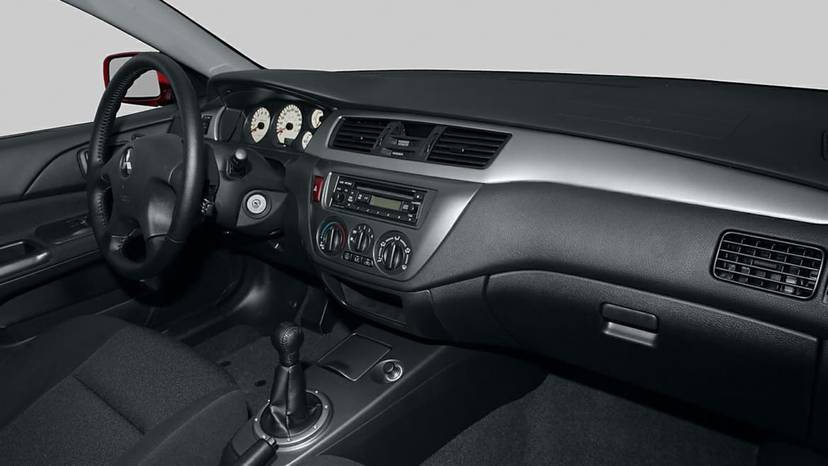
Nasty!
A short opening paragraph, but appropriate.
The 2006 Mitsubishi Evolution IX is exactly that — nasty, though in a wicked good way.
The Evolution line comes from a company that lost its luster in the face of competition from Toyota, Honda, Subaru, Nissan, Kia, and Hyundai. This car helps make Mitsubishi shine again.
The ninth-generation Evo, the second of its kind on America’s roads, provides only a taste of what may be coming when the Evo X sits at the starting line next year.
Two years ago, at a venue that mixed road endurance, racetrack, and drag strip, I watched a highly tuned Evo dust away the best that Viper, Corvette, Porsche, and others could throw its way. And think: This came from a 2.0-liter engine. Of course, all-wheel drive helps at such events. But AWD in a performance car also lets New England drivers reach for the performance they need in winter.
With its smoked, mysterious headlights and taillights, its wide and narrow front grille, the Evo says “watch out for me” right from the gate. Emphasizing the look is an air intake setup that dominates the lower fascia. Getting air to the intercooler is an important part of this car’s diet, and the scoops suck it in. The way the intake is positioned to consume low ground air makes the car look like a ready-to-pounce jungle cat.
It features 286 horsepower and a tugging 289 lb.-ft. of torque to propel a car that weighs just over 3,000 pounds — thanks in part to the addition of an aluminum roof — making it quick and nimble at full stride.
That’s an impressive bit of torque for a high-rev, 2.0-liter engine. And the five-speed manual transmission handles it with quicker, closer clicks than the last generation Evolution.
The four-wheel independent suspension is quite stiff, something especially noticeable on bumpy back roads. Yet this car received heavy testing on the famous Nurburgring in Germany — more than 14 miles of twisting, undulating, off-camber curves, and horrendous changes in track surfaces. If the suspension handles the power there, it will handle it anywhere.
Helping keep the transfer of power and traction under control is an active center differential and a front limited slip differential. It’s a paired contribution that is most noted in aggressive cornering.
An intercooled turbocharger seemed to provide an obvious wide band of torque from just below 2,000 rpms all the way to over 5,000 rpms.
This meant not only incredibly rapid launches, but also strong and lasting surges on highway entrance ramps and in passing, as well as plenty of power exiting corners.
And the fun begins at such low speeds that playing as described does not mean you have to break the rules of the road. It is as tactile a car as I’ve driven in some time.
Inside, Recaro seats are firmly bolstered along and up the sides with leather. The grip of their Alcantara surfaces is superb. The titanium-spoked steering wheel, billet aluminum pedals, and a race car-evocative set of round gauges — with tachometer properly at the center — give the car a utilitarian cockpit feel.
Standard performance and safety equipment includes the turbocharger, all-wheel drive, the paired limited slip differentials, Brembo ventilated disc brakes, and antilock brake system and front and rear crumple zones.
Is the Evo a car for the everyday, here-to-there commuter? Probably not.
But it is a car for the weekend racer and commuters who want to have sane bursts of fun while traveling to and from work.
Royal Ford can be reached at ford@globe.com.







